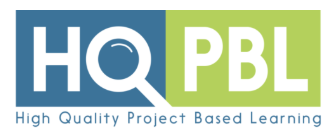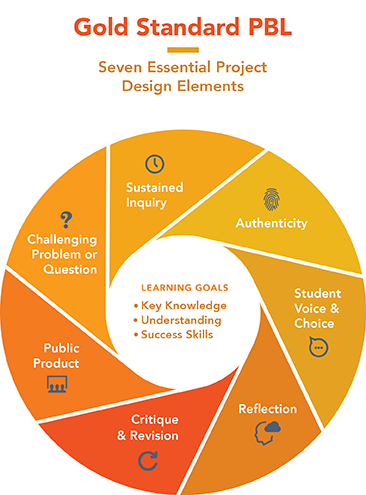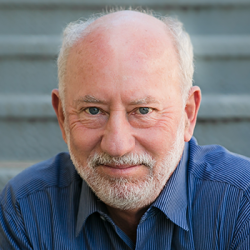 In case you were wondering... No, the Buck is not changing its model for Project Based Learning again. We did that in 2015 and made sure to write a whole blog post about it so people wouldn’t be confused. Our professional development, materials, and publications will continue to be based on our model for Gold Standard PBL. The new High Quality Project Based Learning Framework, just released this month, is a separate thing, although we were involved in its creation and promotion—and our model is aligned with it.
In case you were wondering... No, the Buck is not changing its model for Project Based Learning again. We did that in 2015 and made sure to write a whole blog post about it so people wouldn’t be confused. Our professional development, materials, and publications will continue to be based on our model for Gold Standard PBL. The new High Quality Project Based Learning Framework, just released this month, is a separate thing, although we were involved in its creation and promotion—and our model is aligned with it.
Here’s the backstory. BIE updated its model for PBL in 2015 in two major ways, which we explained in our book with ASCD Setting the Standard for Project Based Learning. First, we wanted to provide a more exact and research-based definition of what we think are the seven Essential Project Design Elements a teacher should follow when creating or adapting a project. Second, we decided it was important to highlight the active role of the teacher in PBL, to counter the stereotype that students work on projects independently with only minimal check-ins with a teacher—so we listed seven Project Based Teaching Practices to guide the implementation of a project. (Which, btw, is the topic of our new book with ASCD to be released in Sept. 2018.)
 However, the Gold Standard PBL model is our model, and many other organizations and experts have their own approach to PBL that, while mostly similar in spirit, differ in emphasis or specific language. With the explosion of interest in PBL in recent years, we felt it was important for the field of education to have a co-created and shared vision of what good PBL looks like. Without a shared vision to which the vast majority of stakeholders commit, many competing definitions would create confusion among educators and researchers. Teachers, schools, districts, states, and nations around the world would not know for sure what to base their PBL practice on. Purveyors of PBL support (e.g., consultants, new PBL-oriented organizations) and materials (lookin’ at you, commercial publishers) might provide lower-quality professional development or “project-based” curricula that were not truly PBL. All of this could add up to a failure to deliver on the promises of PBL—and then it would become one of yesterday’s education fads. We really don’t want that to happen.
However, the Gold Standard PBL model is our model, and many other organizations and experts have their own approach to PBL that, while mostly similar in spirit, differ in emphasis or specific language. With the explosion of interest in PBL in recent years, we felt it was important for the field of education to have a co-created and shared vision of what good PBL looks like. Without a shared vision to which the vast majority of stakeholders commit, many competing definitions would create confusion among educators and researchers. Teachers, schools, districts, states, and nations around the world would not know for sure what to base their PBL practice on. Purveyors of PBL support (e.g., consultants, new PBL-oriented organizations) and materials (lookin’ at you, commercial publishers) might provide lower-quality professional development or “project-based” curricula that were not truly PBL. All of this could add up to a failure to deliver on the promises of PBL—and then it would become one of yesterday’s education fads. We really don’t want that to happen.
How HQPBL Came to Be
To address our concern, BIE partnered with Getting Smart to promote and facilitate the development of a new shared vision for PBL—both nationally across the U.S. and internationally. A steering committee of 27 members was formed to represent a variety of stakeholder groups, from practitioners to prominent thought leaders, from all over the world including the US, Finland, Chile, Korea, and China. Well-known organizations associated with PBL were represented, including New Tech Network, EL Education, High Tech High, Envision Schools, EdVisions, Big Picture Learning, Partnership for 21st Century Learning, and Edutopia. In addition, a 90-member advisory committee made contributions through feedback sessions and communication campaigns. The work was supported by the Project Management Institute Educational Foundation, and the William and Flora Hewlett Foundation.
The HQPBL steering committee spent many hours debating what to include in the shortest possible list of criteria for high quality PBL. A draft of the criteria was made public online for feedback, and thousands of people responded. Multiple rounds of revision led to the steering committee’s final adoption of these six criteria:
- Intellectual Challenge and Accomplishment
- Authenticity
- Public Product
- Collaboration
- Project Management
- Reflection
It's important to note that the HQPBL Framework is written in terms of the student experience of PBL, rather than describing how teachers should do PBL, unlike many other models (including BIE’s). If you can answer “yes” to each of the questions under each criterion about what is true for students in a project, then you'll know their PBL experience is a good one no matter what path you took to get there. You can read more about the criteria here, along with a list of partners who have committed to the Framework and an important document, “Defining High Quality PBL: A Look at the Research.” The HQPBL website also features videos of HQPBL in action and will have additional resources to come.
How Gold Standard PBL Aligns
Committing to the HQPBL Framework does not mean a teacher, school or district, or organization needs to give up their own particular approach to PBL. Think of it like the Good Housekeeping Seal of Approval which signifies to consumers that a product or service meets certain standards for quality, which various manufacturers or organizations can place on their packaging or use for marketing. For educators, the Framework can help them guarantee they are providing students with effective implementation of PBL—which all students deserve access to, no matter where they live or what their background.
Right away you can see that three of the criteria are exactly the same as three of BIE’s Essential Project Design Elements: authenticity, public product, and reflection. The HQPBL steering committee agreed on those, and several others were considered. What about student voice and choice or agency? Inquiry? High-quality work? Content standards and 21st century success skills/habits of mind? Equity? You might recognize these ideas from BIE's work. All were eventually included in some form, as you’ll see when you read the details under one or more of the criteria or the explanatory material alongside the criteria. That’s why BIE can commit to the Framework.
How about you? Can you commit? Please join this important movement!

